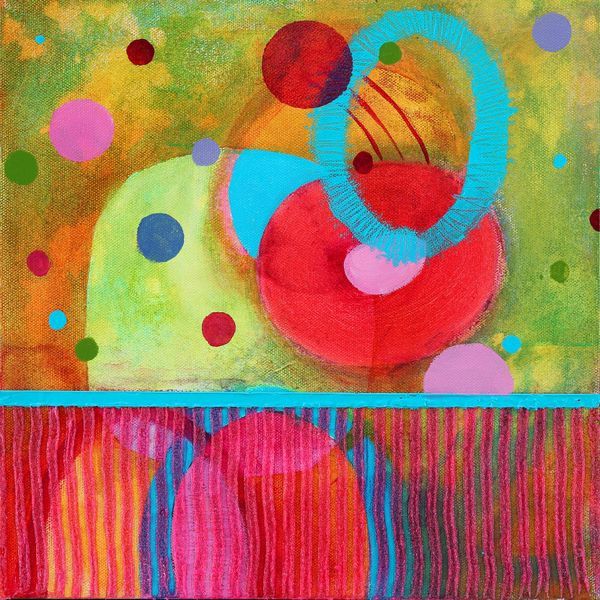 If you want to get your feet wet in painting, but are not ready to deal with solvents and oil paints or the transparent layers of watercolors, you might find acrylic paints a great place to start.
If you want to get your feet wet in painting, but are not ready to deal with solvents and oil paints or the transparent layers of watercolors, you might find acrylic paints a great place to start.
Acrylics incorporate the same pigments found in oils but the binder is a synthetic acrylic polymer. They are extremely versatile and responsive, and they will not yellow with time. Acrylics dry faster than oils and are water-based paints, yet unlike watercolors once they are dry the paint is not water soluble. They come in three different forms, heavy body, soft body, and fluid. Heavy body paints are like a firm paste, soft body paints are creamy, and fluid paints are like using viscous inks. With the different type of paints you can get different effects says Robert, who works in our fine arts department.
You can use a heavy body paint for texture, a soft body will give you a smooth finish and the fluids can result in a nice watercolor effect”, says Robert.
A wonderful thing about acrylics is that you can mix them with a large variety of mediums and modifiers to achieve different characteristics. Gels and modeling pastes will thicken the paint to create textured strokes. There are also retarders to slow out its drying time and matte or glossy mediums that can make the acrylic transparent without losing viscosity.
Gel mediums are also great for creating new looks to your work; just mix the gel with a bit of a particular color to capture its hue, but still have a transparent paint. These mediums can even act as a glue and are great for collaging and as transfer mediums.
 The best part about acrylics is that it can work great on most surfaces without having to do too much preparation for it, and when you’re done it’s easy to clean up. Also if you start off with glossy paints, but then realize a matte finish would look better you can just varnish it with a matte finish and the problem is easily solved.
The best part about acrylics is that it can work great on most surfaces without having to do too much preparation for it, and when you’re done it’s easy to clean up. Also if you start off with glossy paints, but then realize a matte finish would look better you can just varnish it with a matte finish and the problem is easily solved.
“We don’t want to tell anyone what is the right paint to start with because there isn’t one paint medium that’s better than another,” Joni Marie, one of the managers at Flax said. “I like oils, but everyone works differently and may find that acrylics or another type of paint fits their needs better.”
Often customers who want to try painting for the first time and have little or no experience may find acrylics as a good starting point, according to Joni Marie. “Acrylic can be a stepping stone into the art world, but it’s not just a beginner’s medium,” she said.
Flax carries a variety of brands from student to professional grade like Liquitex, Golden, Winsor & Newton and Sennelier among a few others. Acrylics are available in different grades depending on their primary components. Artist grade acrylics contain a higher amount of pigmentation and are thicker in viscosity, making them perfect for heavy impastos. The student grade acrylics use extenders and less pigments, making it a less expensive formula to fit into a student budget.
